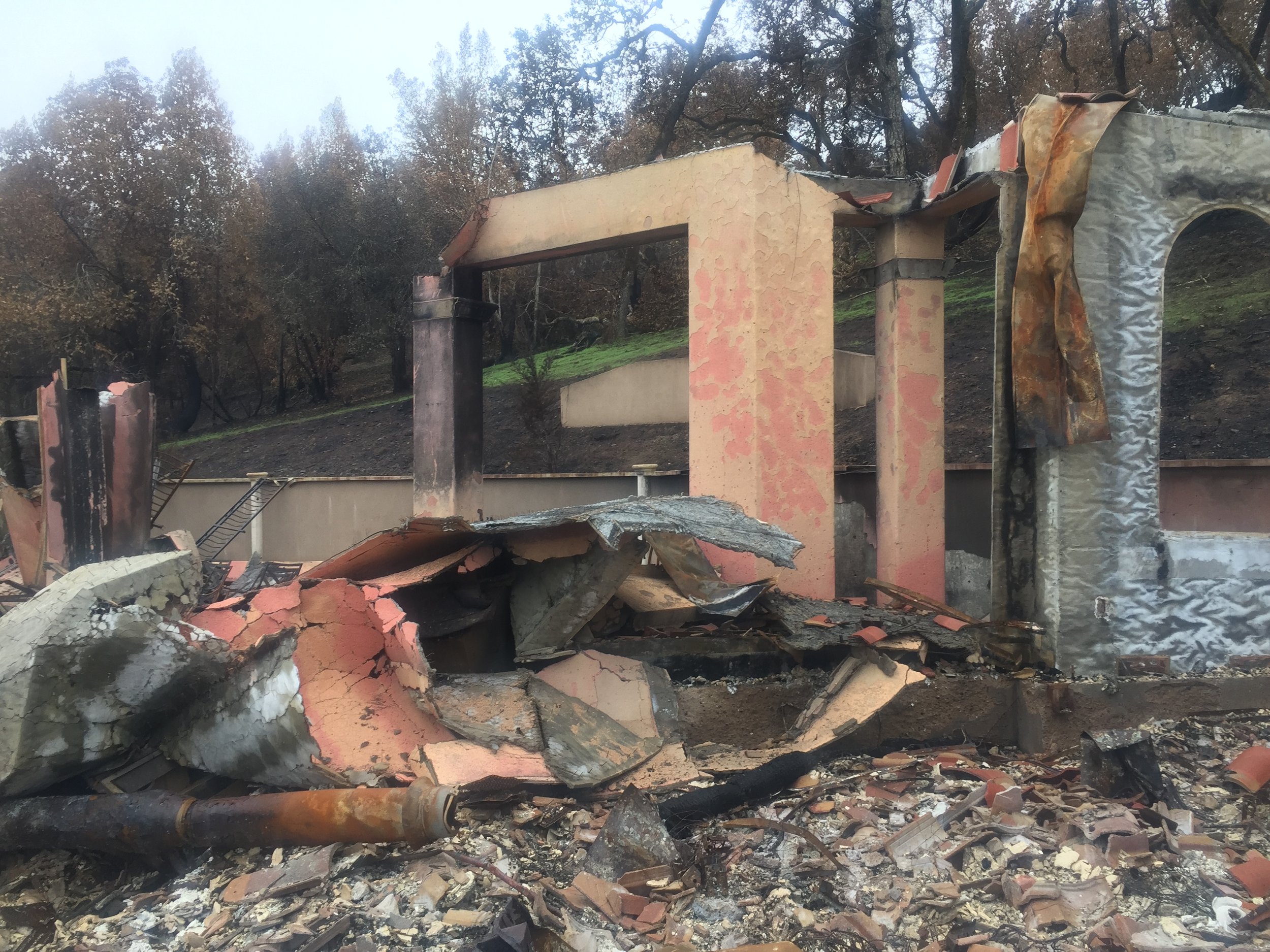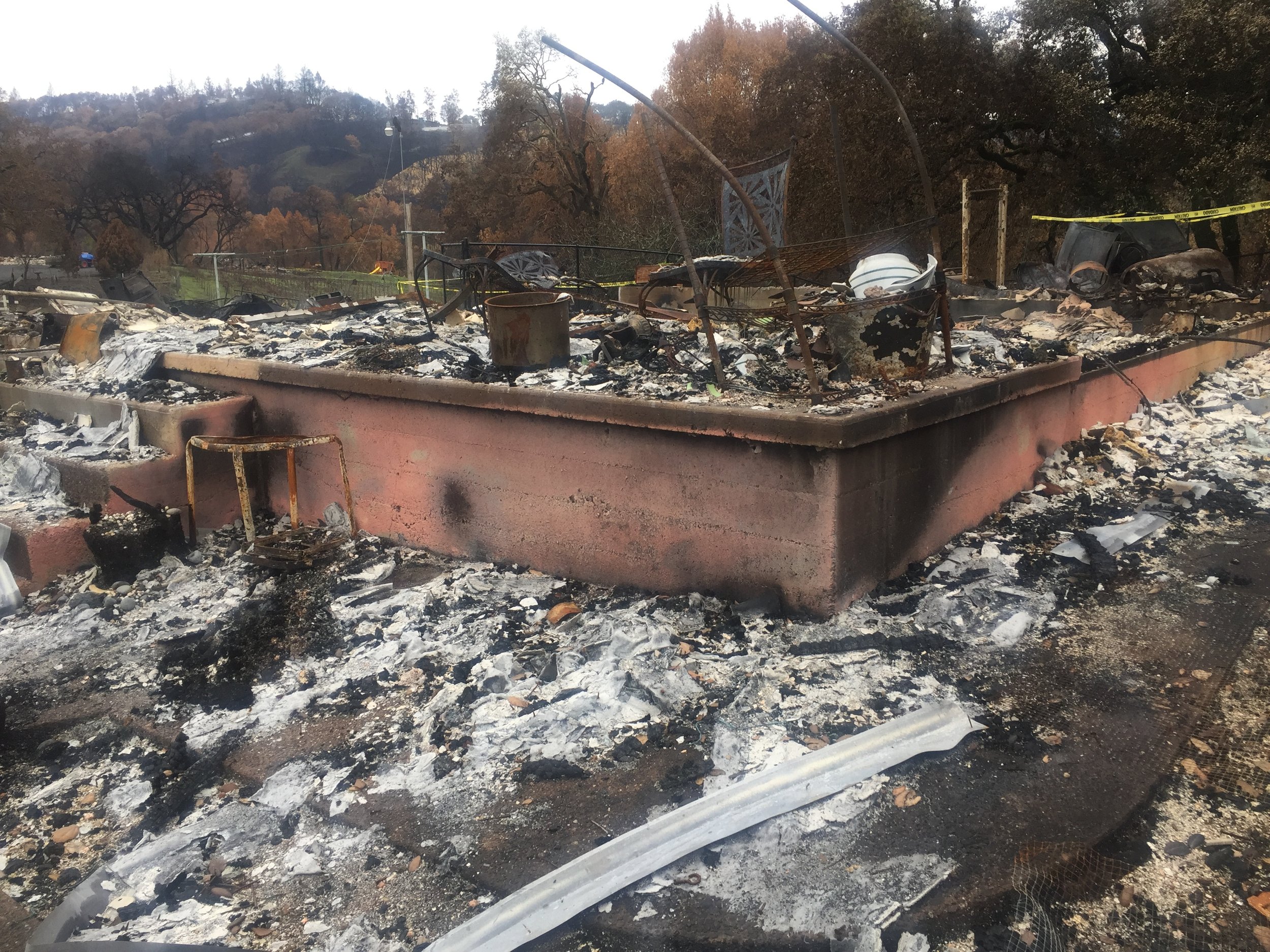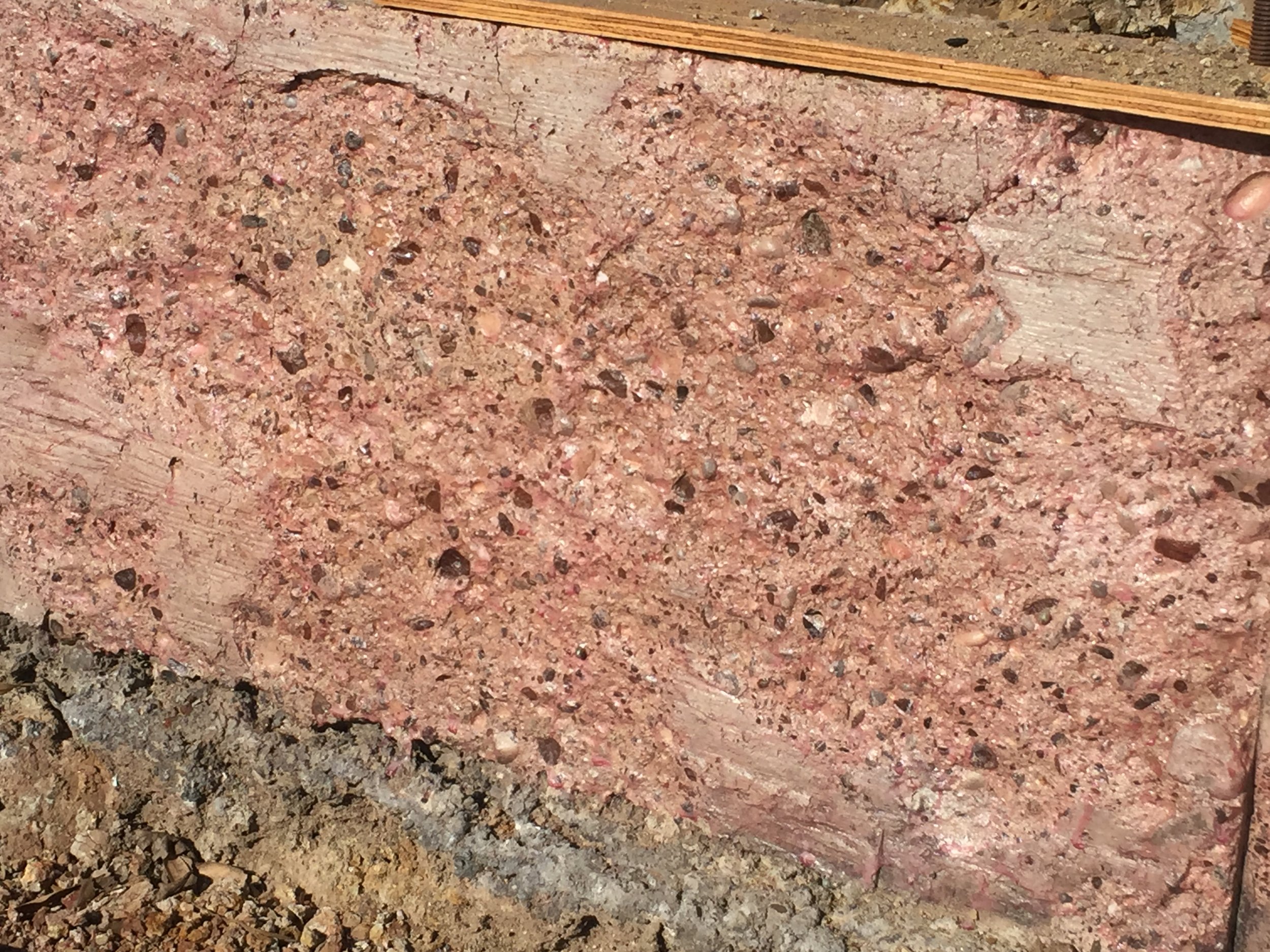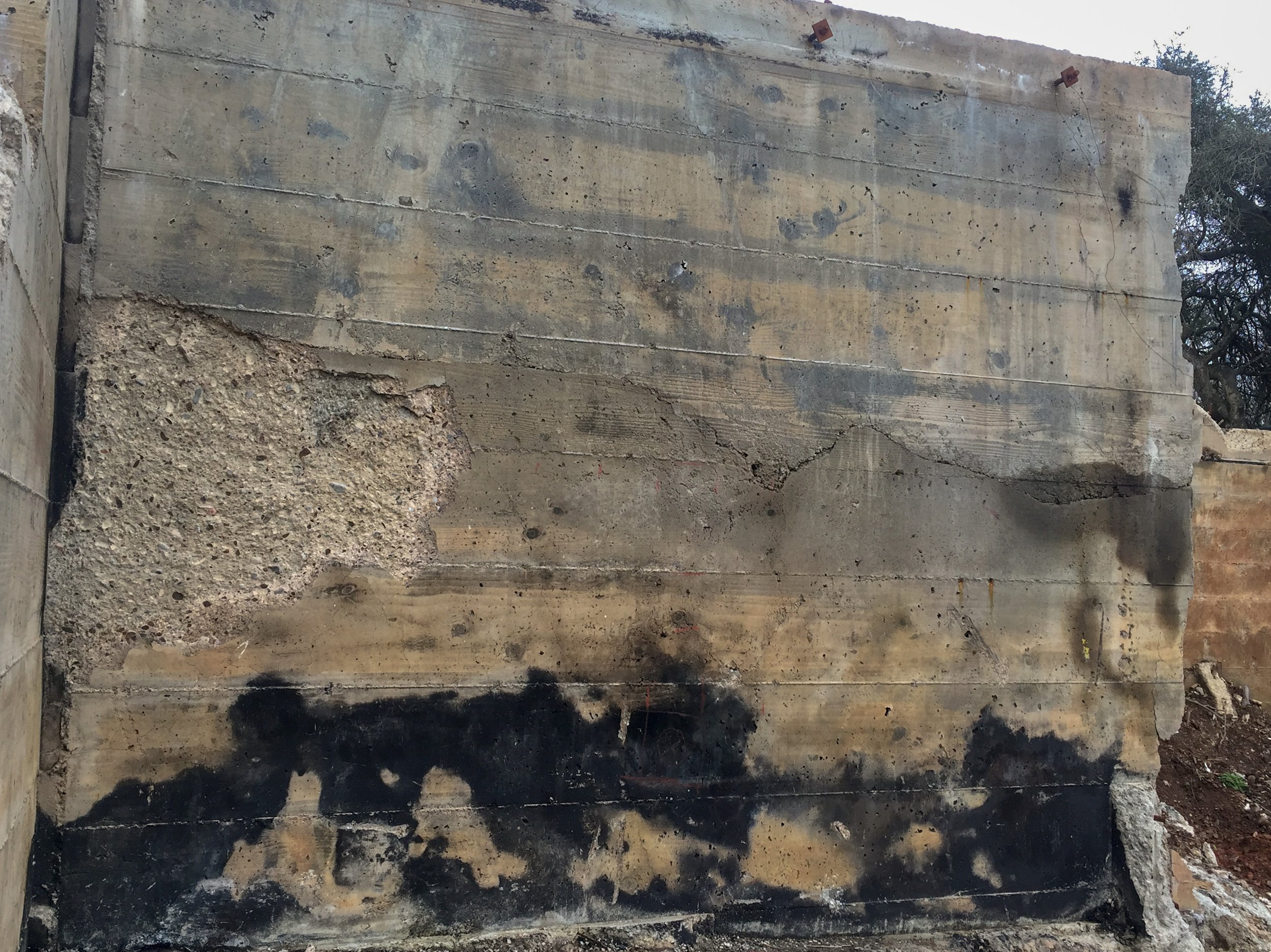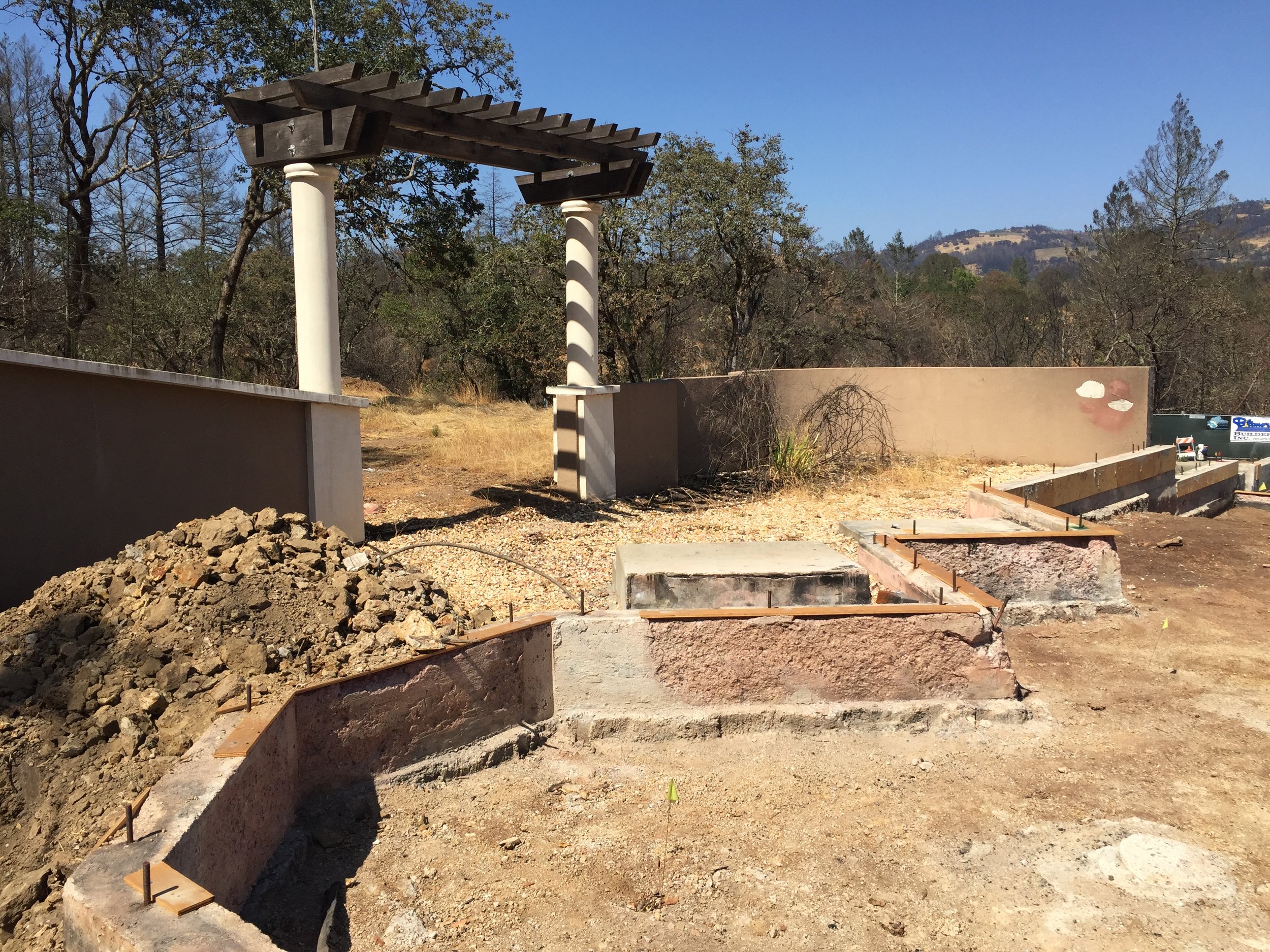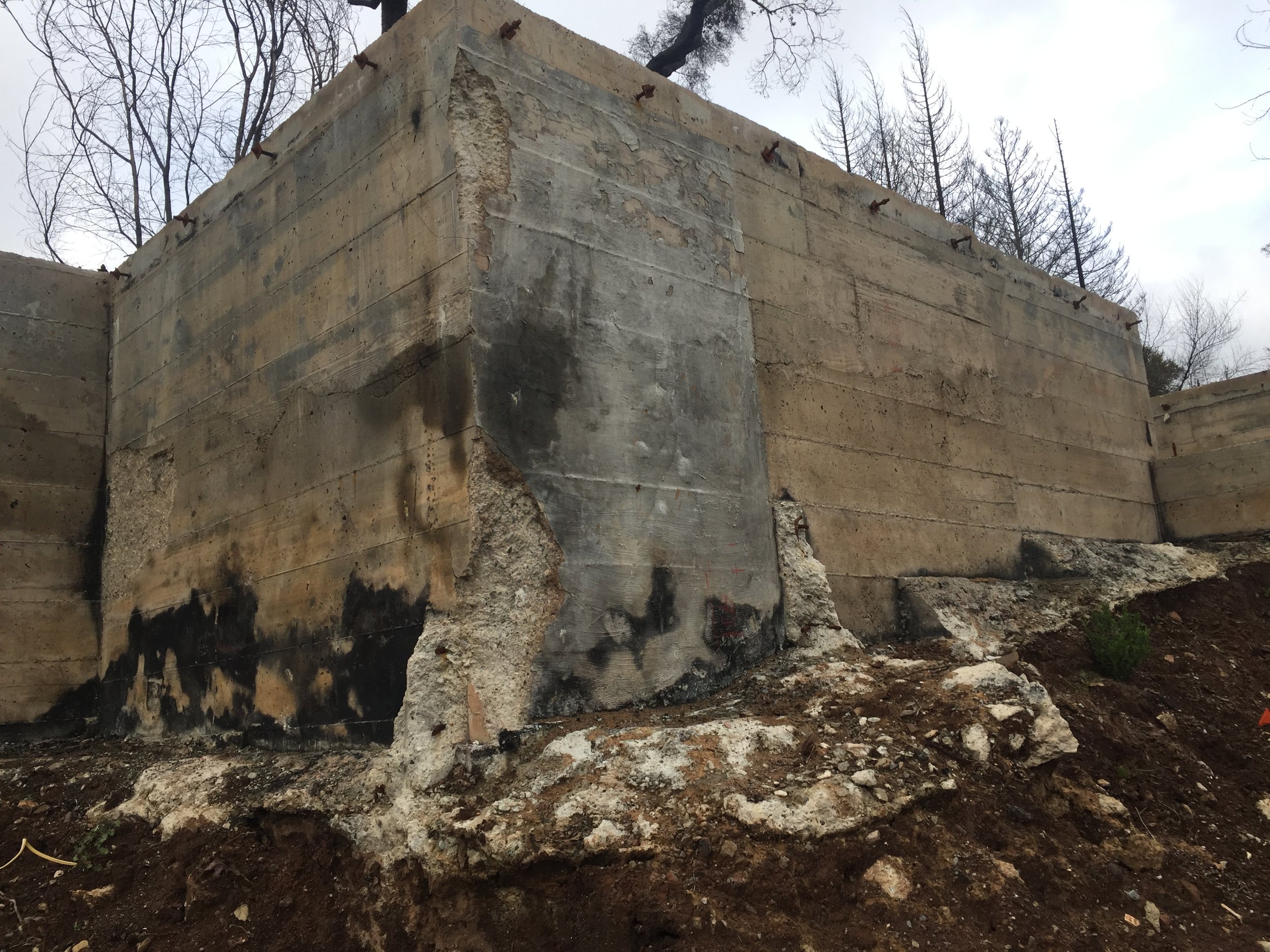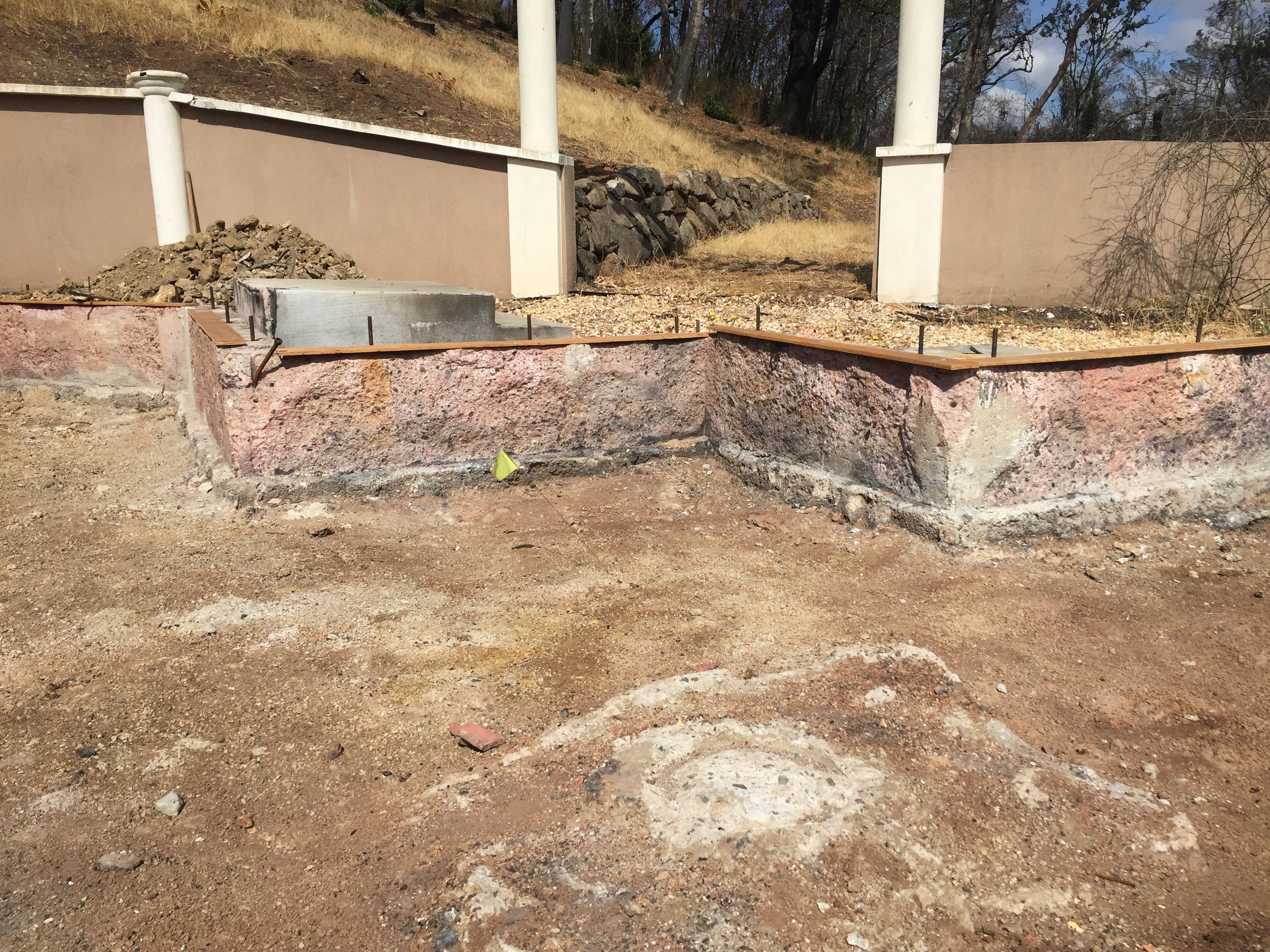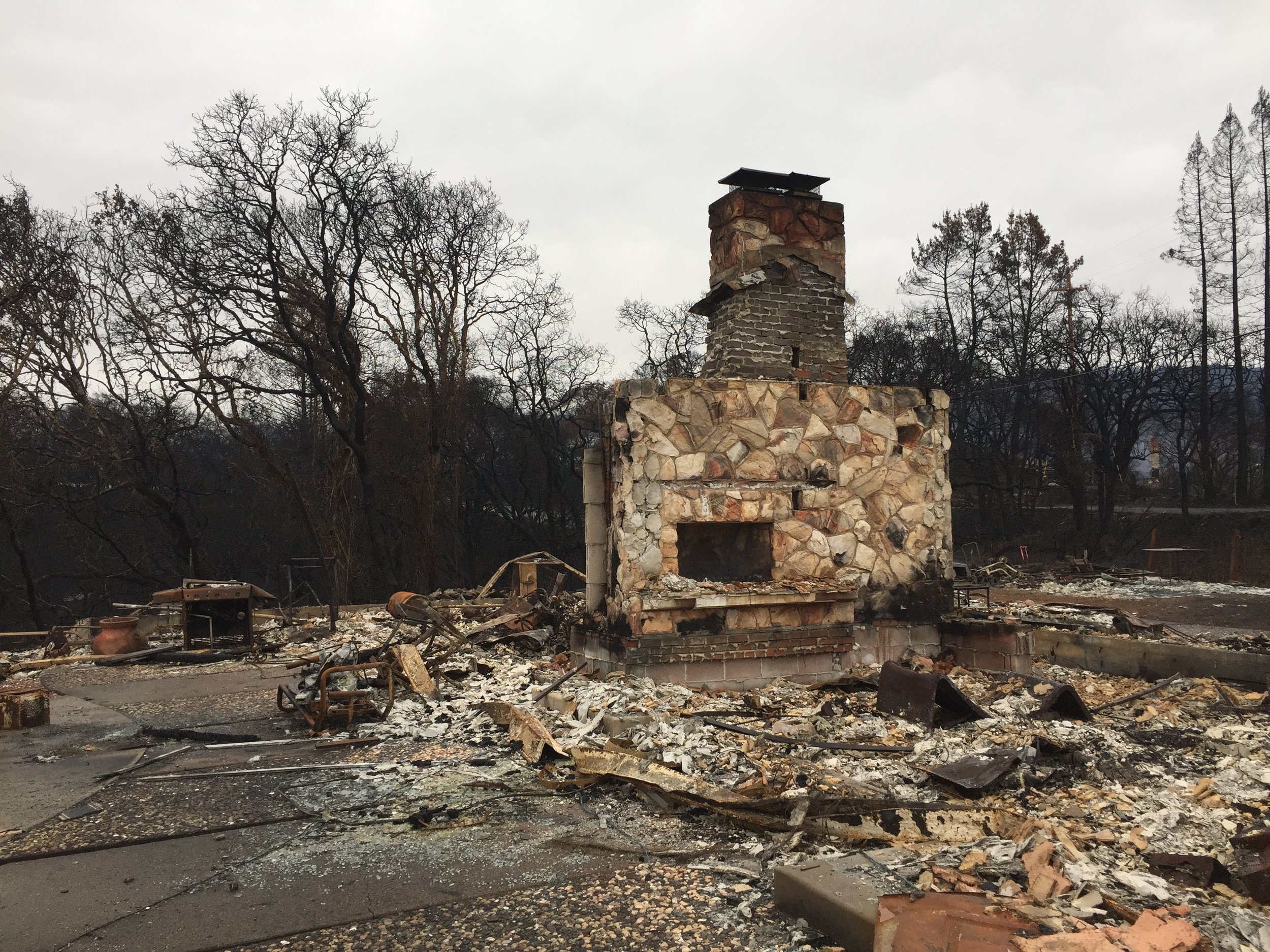
Santa Rosa Wildfires Rehabilitation
Overview
In the wake of the Santa Rosa California Wildfires, numerous homeowners sought expert guidance on post-fire concrete foundation assessment and structural integrity testing to rehabilitate their properties. Concrete Science® Inc., a leader in concrete inspection and rehabilitation, assisted many of these individuals. This case study highlights one such homeowner’s experience, illustrating our comprehensive approach to evaluating fire-damaged concrete, providing accurate foundation testing, and offering tailored repair solutions. Our goal is to help clients make informed decisions that ensure safe, code-compliant, and long-lasting rebuilding efforts.
Scope of Work
Our concrete condition assessment began with a detailed visual inspection, followed by a series of in-depth tests, both on-site and in the lab. By leveraging petrographic analysis, core strength testing, and anchor bolt pull-out tests, our team of concrete engineering experts aimed to understand the full extent of fire-induced damage hidden beneath the charred surfaces. This level of specialized structural evaluation ensures that property owners receive a reliable, data-driven roadmap to either reuse or replace their fire-damaged concrete foundations.
We identified extensive surface spalling (up to 1.5–2 inches deep) and weakened top layers of the stem wall. This foundation damage assessment revealed that the retaining wall suffered far less deterioration, with underlying concrete remaining mostly intact.
Excavations showed that two of three house foundation footings were significantly shallower than the minimum required 18 inches. Such foundation code compliance checks are crucial, as insufficient footing depth can lead to long-term stability issues even if the concrete remains strong.
Using rebound hammer tests and other non-destructive evaluation techniques, we found the underlying concrete to have compressive strengths around 4,500 psi. This structural testing demonstrates that not all fire-exposed foundations suffer complete material degradation, allowing for more targeted rehabilitation strategies.
Our team extracted concrete cores and conducted a petrographic analysis of fire-damaged concrete, revealing that while surface layers were compromised, the underlying matrix showed no direct evidence of internal fire-related damage. Aggregates were well distributed, cement paste remained intact, and carbonation extended just ½-inch to ¾-inch beneath the surface. This detailed concrete materials evaluation helps inform whether partial or full-depth repairs are necessary.
Our anchor bolt testing services found that many bolts failed to meet the required load capacity. These tests are essential in fire-damaged foundation repairs since compromised steel-to-concrete bonds can undermine structural performance. Through this assessment, we ensure that any new construction or upgrades are anchored securely to stable, code-compliant foundations.
Key Findings
House Foundation: Severe surface deterioration and insufficient footing depth in key locations created potential structural risks. Although the core concrete remained strong, shallow anchorage and failed anchor bolts would need attention for a safe rebuild.
Retaining Wall: Minimal damage, strong underlying concrete, and no clear internal fire damage meant that the retaining wall required primarily cosmetic repairs such as stucco replacement.
Solutions and Recommendations
Full Rebuild (if Footing Depth Remains an Issue):
If the inadequate footing depth cannot meet engineering standards, we recommended comprehensive foundation replacement. Our experience in post-fire structural reconstruction ensures a new, fully compliant foundation.Partial Rebuild (if Footing Depth is Approved):
Concrete Science® suggested a selective concrete removal and replacement strategy for the top 6 inches of stem walls. Using high-quality concrete, galvanized anchor bolts, and proper embedment techniques, along with replacing shallow or isolated footings, can restore structural integrity.Retaining Wall Repairs:
Since the retaining wall was largely unaffected internally, our recommendation focuses on surface rehabilitation. Removing damaged finishes and reapplying protective coatings ensures long-term durability and improved aesthetics.
Outcome
By combining on-site structural evaluations, laboratory concrete testing, and petrographic examinations, Concrete Science® Inc. provided the homeowner and their engineers with a clear, data-driven plan. Equipped with these insights, they could confidently choose between a complete foundation rebuild or a controlled partial repair. The result is a safe, code-compliant, and long-lasting foundation that will support the homeowner’s rebuilding efforts for years to come, exemplifying the expert foundation investigation and rehabilitation services Concrete Science® Inc. offers to all clients in need of post-fire concrete evaluations.
Thank you to our partner
General Contractor
Biltmore Builders, Inc.






